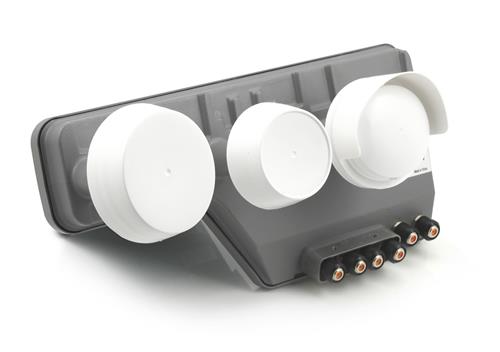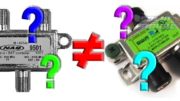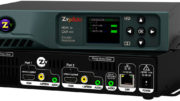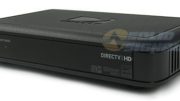DIRECTV may have its detractors in the residential world. I’ll admit that. It’s only one choice in an increasingly complex mix of pay TV and streaming out there. But when it comes to business, DIRECTV is the king. Period. No one else offers a better mix of programs at a better price. Best of all, DIRECTV’s commercial operation is led by dealers like Signal Connect. Some pay-TV companies lump it all together, meaning that the special requirements for commercial customers aren’t thought of. And let’s not forget, in most cases streaming is not allowed in public commercial spaces. It’s a copyright thing.
But you, the DIRECTV commercial installer, know that. You probably clicked through to this article to find out why I would recommend using so much copper on a commercial install. Partially it’s because “DIRECTV says so.” It’s their standard. But, it’s also common sense and I’ll show you why.
The six-line LNB

Rather than the single-line LNB used for residential customers, most commercial customers should be using the 6-line Slimline 5 Legacy Reverse Band LNB. This is DIRECTV standard practice for commercial customers because it allows for a more flexible install. The standard SWM LNB doesn’t really work well if the dish is more than 100 feet from the receiver, and you can’t use amplifiers in SWM-LNB situations. Yes, it’s a big annoying LNB. But, it’s the right choice.
Using this LNB will require you to run six lines from the dish and use an external multiswitch. That’s quite a bit of extra cost, I really do understand. But it’s how you’ll keep this install reliable. You don’t want to get that phone call on a Sunday that you have to go out and fix something, do you? Is any amount of money worth that?
Yeah but 7 lines?
That’s right, I recommend you run 7 coax lines all the way from the dish to the SWM when you do the initial install. Yes, I get it. It’s a lot of space in the conduits. It’s a lot of holes in the walls. And, it’s a lot of expensive copper that your customer doesn’t want to pay for. But it’s really worth it.
Having that seventh line gives you peace of mind several ways. It can be used for an internet installation later on if you need it. It can be used to connect an over-the-air antenna which is a good redundancy when the weather is bad. Or, it can be used as a live spare. If silverfish get into the conduits, they might eat through one cable. You’ll need to deal with that (and the building owner will need to deal with the silverfish.) But in the meantime, unless things have gotten really bad, you’ll have a spare line to fall back on so the customer is back to live TV quickly.
By the way…
A lot of people have asked me if there will be a 3-location version of this LNB. It would make sense since the 110 location is already offline and the 119 location is almost there too. At some point if DIRECTV places a new build order for this LNB, it probably will end up being a 3-location LNB. That will make it easier to peak, but it’s still going to require the same seven coax lines. The only thing that will really change will be the shape of the LNB, and that’s probably not your customer’s biggest concern.
Get the commercial parts you need at Solid Signal
Solid Signal is your home for all the DIRECTV commercial parts you need. We stock the exact same parts used by DIRECTV technicians, the same ones that come from their warehouses. Shop our great selection now! If you have questions before, during, or after the sale, call us at 888-233-7563. If it’s after East Coast business hours, fill out the form below. We’ll get back to you, usually within one business day.





